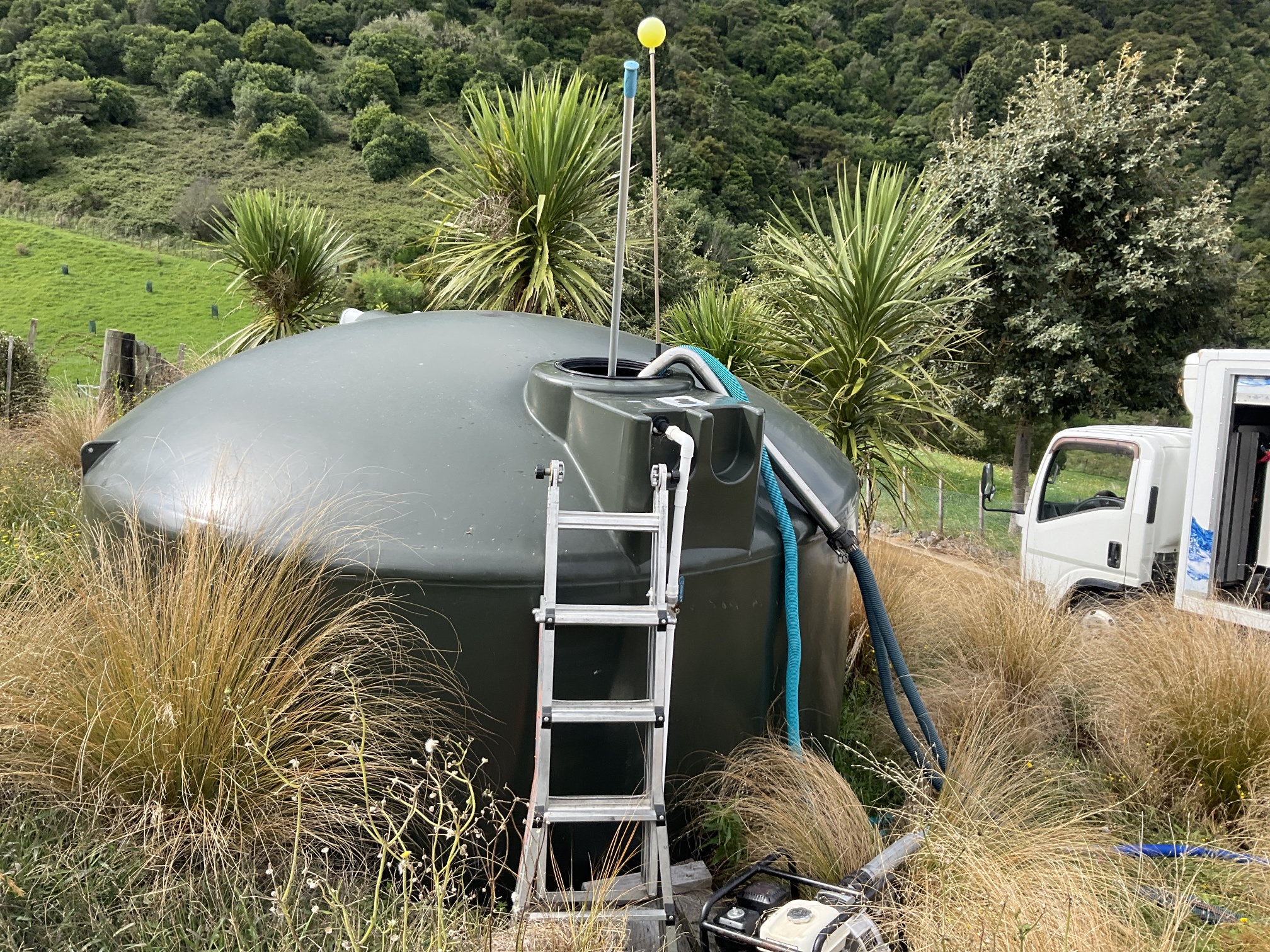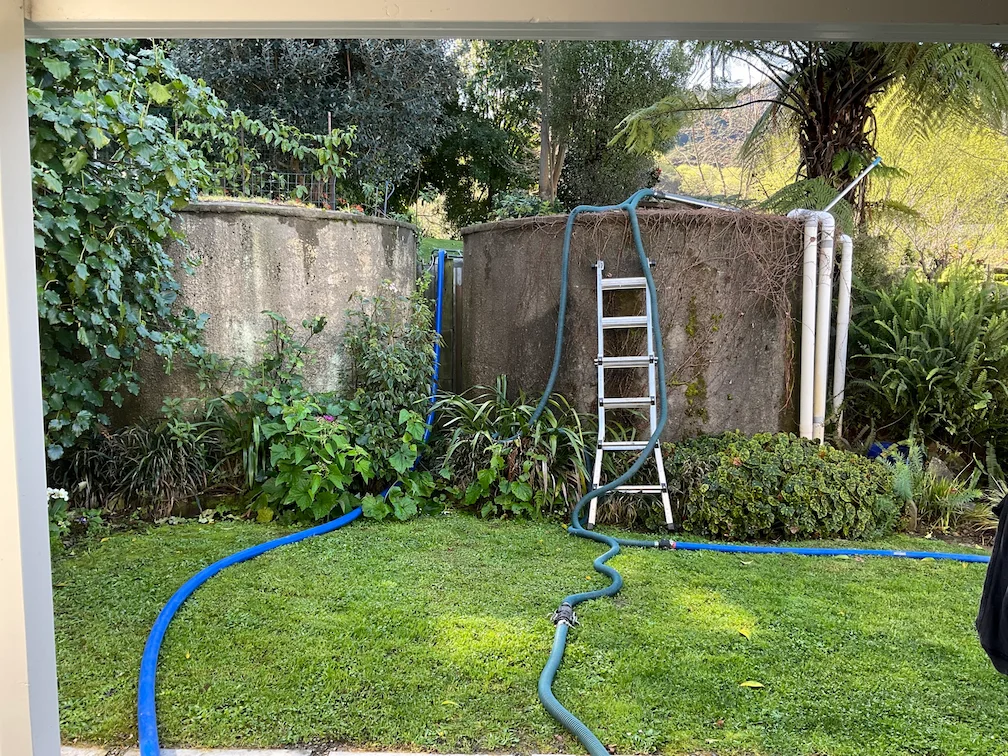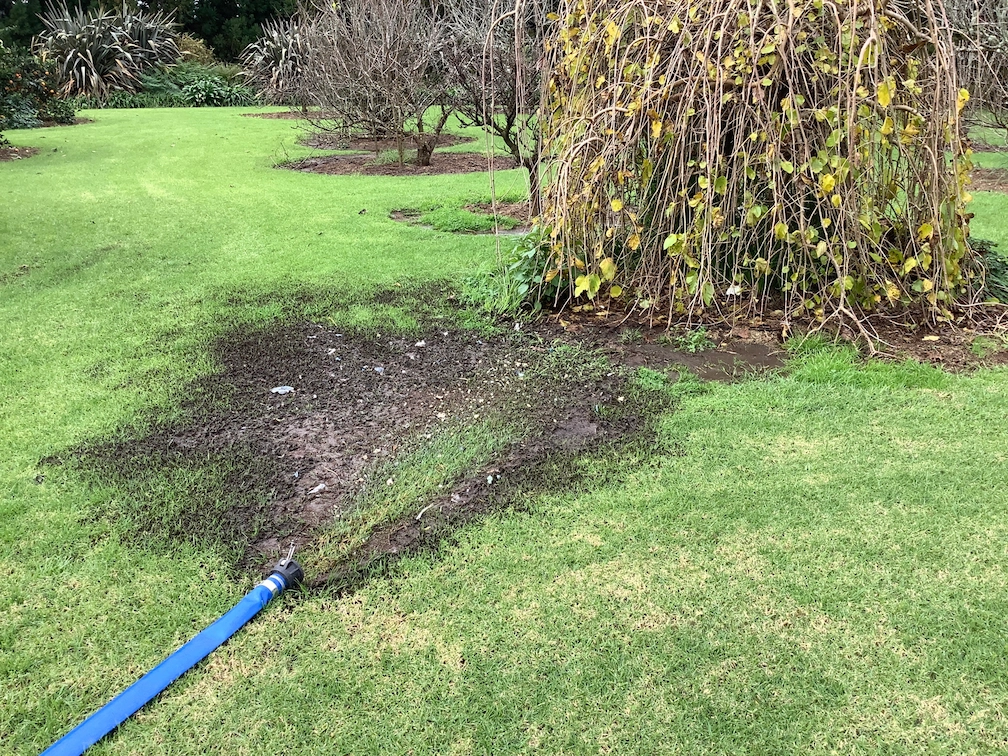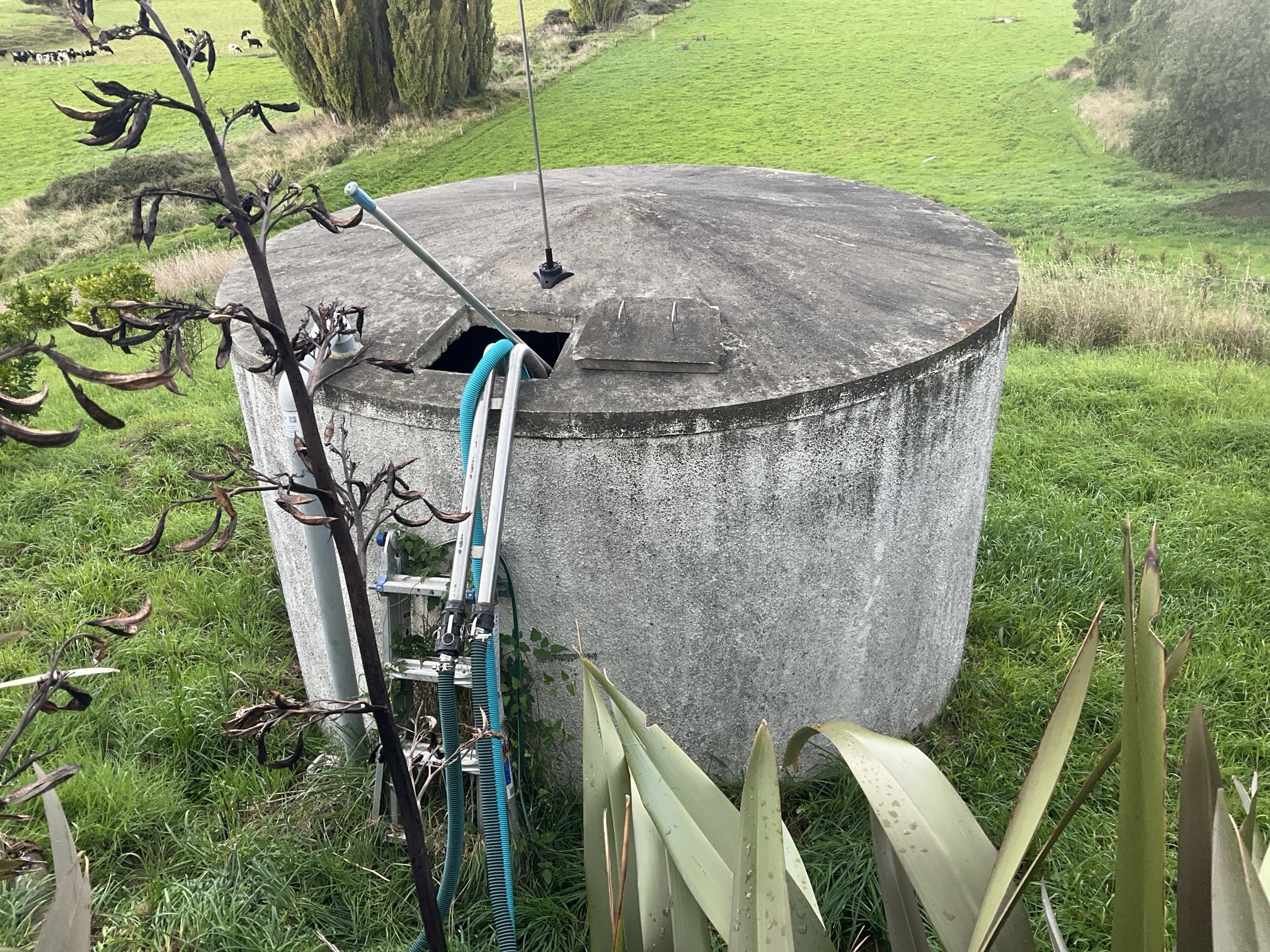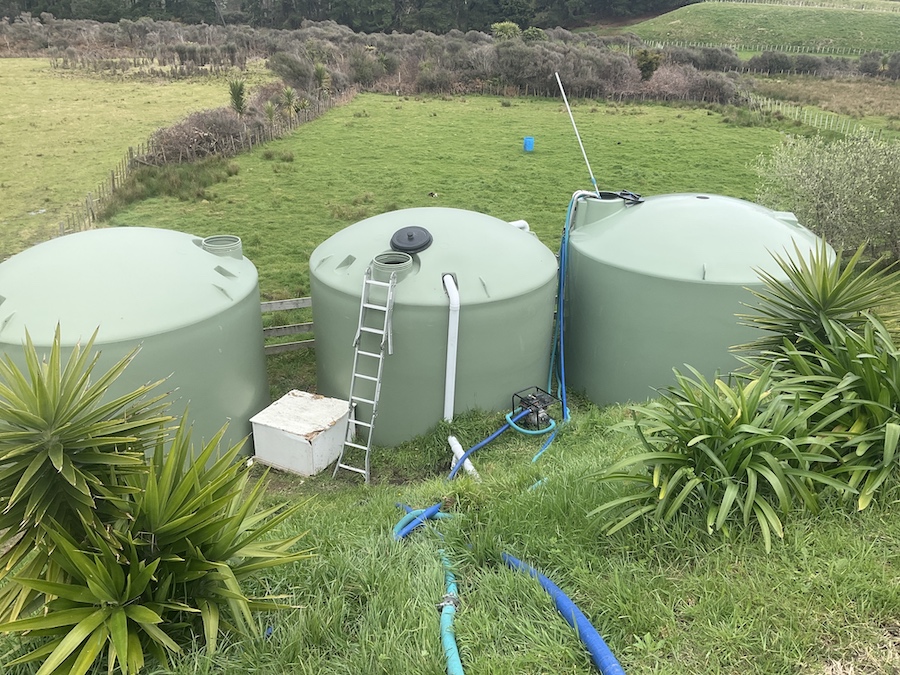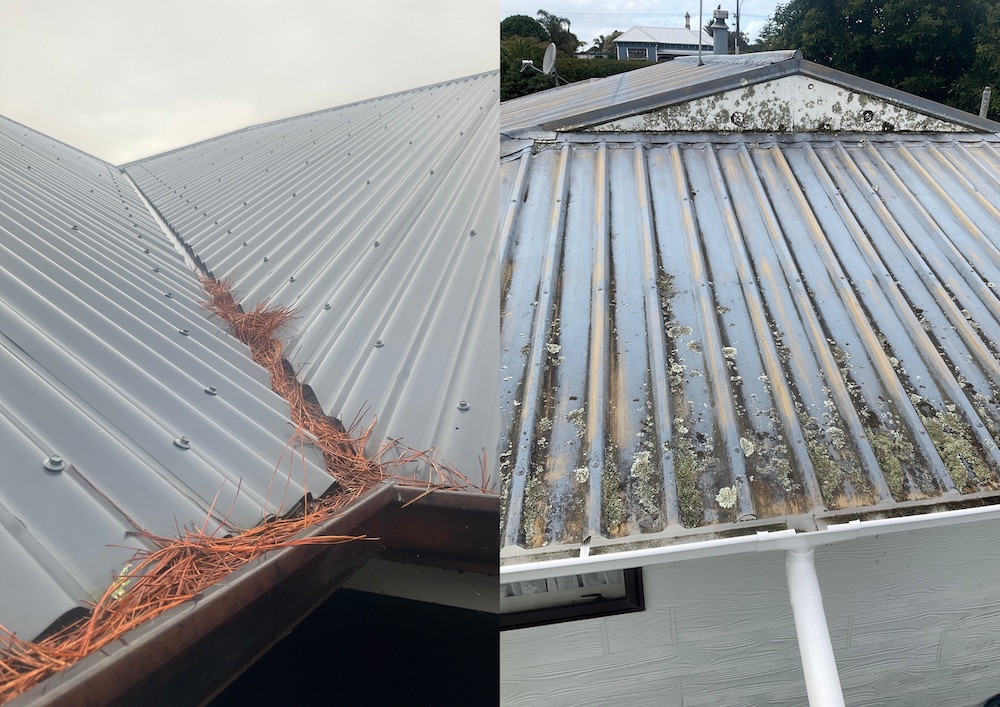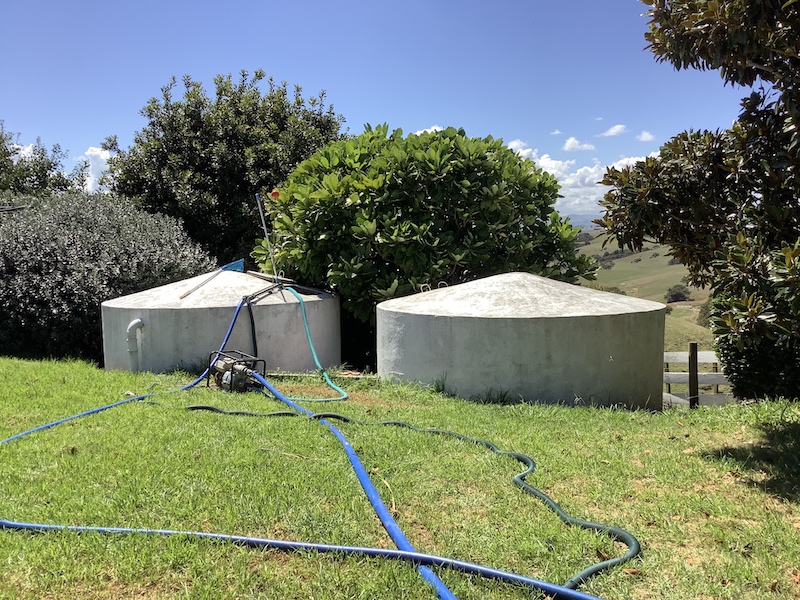Flush Caps, Leaf Diverters, and More: Methods to Help Protect Your Water Supply
When it comes to maintaining a clean and safe water supply, minimising what enters your water tank is key. Sediment buildup from leaves, dust, pollen, and other debris leads to contamination, affecting the quality and safety of the water you rely on. Fortunately, several effective methods can help minimise these issues. In this blog, we’ll explore various sediment minimisation techniques, including gutter whiskers, flush caps, first flush diverters, leaf diverters, and tank inlet screens—all designed specifically to limit materials entering your rainwater collection tank(s).
Gutter Whiskers
Gutter Whiskers are a simple yet effective solution for minimising larger debris from accumulating in your gutters. This helps to prevent the debris from being washed into your downpipes and then ultimately into your water tank. Made from bristles that sit inside your gutters, they allow rainwater to flow through while trapping leaves and deterring birds from nesting.
Gutter Whiskers are easy to install and require regular yet trouble-free maintenance. We recommend regularly checking the bristles for any accumulation of debris, especially after heavy rains. If you notice significant buildup, you can remove the debris by hand, or by using a hose or soft brush. Additionally, we advise inspecting the bristles for wear and tear, and replacing them as needed to maintain optimum performance.

Key Benefits:
- Minimising Debris: By using gutter protection, the amount of larger debris that enters your tank is reduced
- Easy installation: Simply insert the gutter whiskers into a clean gutter channel, ensuring they fit snugly for optimal performance.
- Water Quality Maintenance: This method helps ensure that only cleaner water fills your tank, improving overall water quality.
Flush Caps (Sanitary Junctions)
A Flush cap’s purpose is to help divert built up debris in your downpipes and underground pipes feeding water into your tank. The Flush Cap should be installed at the lowest point of your inlet pipe as it comes out of the ground.
By simply unscrewing the flush cap – ideally after or during rain, built-up pressure will flush out stagnant water and debris from your pipes, minimising contamination of your water supply.
For optimal performance, we recommend removing the Flush Cap during or after your first autumn/winter rainfall. This is especially important as after the summer months, the water and debris will have sat in the pipes longer due to lack of rainfall, often leading to unpleasant odours.
 Key Benefits:
Key Benefits:
- Sediment Removal: Flush caps allow for the diversion of sediment and debris, helping your tank to remain clean.
- Preventing Stagnation: Regular flushing helps eliminate stagnant water, which can be a breeding ground for harmful bacteria.
- Affordable: It is a cheaper option as you only need one Flush Cap installed on your tank inlet pipe and the Flush Cap itself is relatively inexpensive.
First Flush Diverters
First Flush Diverters are specifically designed to redirect the initial flow of rainwater into a collection chamber. This is important because the first runoff from your roof and gutters often contains the highest concentrations of contaminants, such as leaves, dirt, and pollen, which can accumulate between rainfalls. For the best results in rainwater harvesting, they are typically installed on every downpipe
First flush diverters come in various shapes and sizes but follow the same function. When it rains, the first portion of water carries this debris, and the first flush diverter captures it. As rainwater enters the chamber, a floating ball rises with the water level and eventually seals the chamber once it is full. This mechanism allows the cleaner water to flow through the pipes and into your water tank.
After each rainfall, the contaminated water drains from the chamber through a small hole at the base. To clean the diverter and remove debris, follow these simple steps:
- Unscrew the smaller nipple where the water slowly drains.
- Remove the filter inside and rinse it thoroughly before reinserting it into the chamber.
- Unscrew the larger cap to release any accumulated debris from the chamber.
- Reassemble all parts to prepare the diverter for the next rainfall
To maintain optimal performance, we recommend cleaning your first flush diverter at least every two months. This will prevent excessive debris buildup and ensure that cleaner water enters your tank.
 Key Benefits:
Key Benefits:
- Contaminant Reduction: By diverting the first flush, these systems reduce the amount of debris entering your tank.
- Water Quality Maintenance: This method helps ensure that only cleaner water fills your tank, improving overall water quality.
Leaf Diverters
Leaf diverters are installed on the gutters or downpipes of your home and are designed to prevent leaves and larger debris from reaching your water tank.
As rainwater flows from the roof and gutters to the downpipes, it carries along unwanted materials like leaves. The leaf diverter utilises a mesh screen that allows water to pass through while redirecting debris away from the water supply. This stops leaves making their way into the tank, enhancing the quality of your collected rainwater.
Most leaf diverters feature removable mesh screens, for ease of maintenance. You do need to regularly check and clear the screens to ensure the leaf diverters continue to work and do not prevent water flow.
It is important to note that leaf diverters need to be installed at the top of downpipes that are at a height above the water tank(s) (otherwise you risk your precious water draining out of the holes where the leaf diverters are installed). Additionally, you also need to ensure you have the necessary clearance on your downpipes to fit the leaf diverter prior to purchase.
 Key Benefits:
Key Benefits:
- Debris Prevention: They catch leaves before they can enter the water collection system, which helps keep your tank and water cleaner.
- Easy Maintenance: You can easily rinse the mesh screen off with water if sediment accumulates and obstructs water flow, although most leaves and debris will naturally fall away over time.
Tank Inlet Screens/Trays
Tank inlet screens are mesh filters placed at the entrance of the water tank (usually on the roof of the tank where the inlet pipe enters). They serve as a barrier to try to minimise leaves, pests, some insects, and debris from entering the tank. The mesh screen allows water to easily flow into the tank and keeps unwanted debris and pests out.
The Tank Inlet Screen is maintained by unscrewing and brushing off accumulated debris. This needs to be regularly checked and cleaned to prevent blockages and ensure you continue to collect rainwater.
 Key Benefits:
Key Benefits:
- Physical Filtration: Inlet screens effectively filter out larger particles, protecting the integrity of your water supply.
- Easy Maintenance: Most screens are removable and can be cleaned or replaced easily, ensuring optimal functionality.
The Importance of Regular Tank Cleaning
While these protective measures can reduce sediment and debris, it’s essential to recognise that they don’t eliminate all risks. Even with these precautions, sediment will inevitably accumulate over time, and some contaminants, such as bacteria from bird droppings, will find their way into your tank. For this reason, it’s key to understand the importance of:
- Regular Water Tank Cleaning: ideally with sediment and UV filtration, remains a crucial part of ensuring a safe and clean water supply.
- Regular Roof and Gutter Cleaning: This helps prevent clogs in systems like first flush diverters and gutter whiskers, ensuring they function effectively.
- Ongoing Tank Maintenance: Regularly check for cracks in the tank, hatch, or inlet pipe, as these can allow sediment and bacteria to bypass your preventative methods.
Why Cleaning Matters
- Health and Safety: Sediment build-up can affect the safety, taste and smell of your water supply, whilst also providing a food source for harmful bacteria and pathogens. Regular cleaning helps eliminate these risks.
- Safe water: Regularly cleaning your tank ensures any installed filtration system can operate to its optimum, allowing the water entering your home to be safe on an ongoing basis.
- Long-Term Maintenance: Keeping your tank clean can extend its lifespan and improve the overall efficiency of your water system.
Conclusion
In summary, employing leaf and sediment prevention methods such as gutter whiskers, flush caps, first flush diverters, leaf diverters, and tank inlet screens can help maintain the quality of your water supply. For best results, it’s advisable to install a combination of these preventative methods, to maximise debris control and ensure cleaner rainwater harvesting. However, these systems should be seen as part of a comprehensive approach that includes regular tank cleaning and filtration. By investing in both prevention and maintenance, you can ensure that your water remains clean, safe, and healthy for you and your family or business.
If you’re considering upgrading your water tank system, be sure to incorporate at least one of these methods for optimal water quality. And remember, regular professional tank cleaning is key to safeguarding your water supply.
Get Professional Help
For expert tank cleaning services throughout the North Island, look no further than Safe H2O. Click here to get a cost estimate for your tanks and ensure the safety of your water supply today!
In this blog, we'll explore these frequent water tank problems and provide practical solutions to address them effectively
Smoke and soot can contaminate NZ water tanks. Learn how it happens, the health risks, and Safe H2O’s expert tips for cleaning and prevention.
This comprehensive guide examines the benefits and drawbacks of DIY and professional water tank cleaning, enabling you to make the best choice for your home.
Winter’s cooler weather might not have you thinking about your water tank - but it should.
Whether you’re collecting rainwater, drawing from a bore, or tapping into a stream, your water tank is the heart of your...
Whether you’re collecting rainwater, drawing from a bore, or tapping into a stream, your water tank is the heart of your...
How Possums, Rodents, and Birds Get into Your Water Tank – and How to Keep Them Out When thinking about water quality, …
What’s in Your Water? Common Contaminants in NZ Drinking Water Tanks Whether your water comes from rainfall, a bore or a nearby …
Water Tank Cleaning Myths Debunked When it comes to maintaining clean and safe water in your tank, there can be a bit …
Autumn Water Tank Care Tips: Preparing for the Seasonal Change As the crisp air of autumn rolls in, it’s time to think …
Water Tank Cleaning: A Comparison of Traditional vs. Our Innovative Method When it comes to cleaning your water tank, Safe H2O cleans …
UNDERSTANDING FILTRATION SYSTEMS: WHAT IS SEDIMENT AND UV WATER FILTRATION? Your water source likely contains a myriad of sediments and particles, ranging …
Water Tanks 101: A Beginner’s Guide to Clean, Safe Water for Your Property Water tanks are an essential resource for those on …
What can I do before water enters my tank to help minimise my risks? Spring or surface water (streams) will usually be …
When it comes to maintaining a healthy rainwater fed tank, one of the most overlooked aspects is the cleanliness of your roof and gutters.
Flush Caps, Leaf Diverters, and More: Methods to Help Protect Your Water Supply When it comes to maintaining a clean and safe …
In the realm of curious misconceptions, one fascinating myth suggests that eels clean water tanks. While this idea captures the...
Why having ‘Immunity’ to Bad Tank Water is a Bad Thing When it comes to maintaining a healthy home, clean water is …
Safe H2O Collaborates with Isaac’s Plumbing, Pumping and Electrical Here at Safe H2O, we aim to provide exceptional advice, service, and support …
How Often Do New Zealand Schools Need to Clean Their Water Tanks? Here in NZ, managing water supplies, including water tank maintenance …
What is Cryptosporidium and How to Keep Your Water Safe What is Cryptosporidium? In simple terms, Cryptosporidium is a tiny parasite that …
Why you should use a Water Tank Cleaning Specialist Well maintained water tanks are the backbone of clean water storage and supply …
Guarding Against E. coli: Essential Strategies for Ensuring Safe Water Tank Systems Water tanks are an essential source of clean drinking water …
5 Top Reasons to Keep Your Water Tank Clean in New Zealand Cleaning your water tanks is something that’s probably not always …
Autumn Alert: Why Now is the Perfect Time to Clean Your Water Tank As the autumn leaves are about to fall and …
What are my Legal Obligations for water tank cleaning in New Zealand? Taumata Arowai is the new Water Services Regulator for Aotearoa …
Top signs your water tank needs cleaning – Don’t ignore these red flags Your water tank is a vital component of your …
How Often Should I Clean My Water Tank in New Zealand? If you are one of the thousands of New Zealanders with …
The Risks of Cleaning Your Water Tank with Janola or Household Bleach Should you use Janola to clean your water tank? Here …
12 Ways to Save Your Tank Water Worried about your water tanks running empty? Rainfed tank water is a limited supply and …
How much does it cost to clean my water tank? The cost of cleaning a typical New Zealand water tank depends on …






